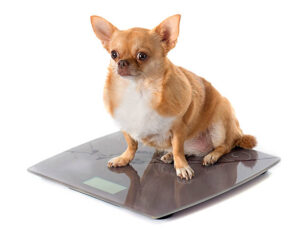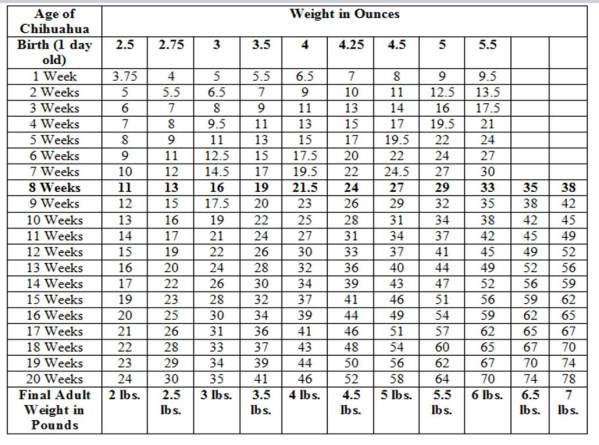A puppy, regardless of breed, size, or form, is an exciting and fulfilling experience that is always enjoyable. Puppies of Chihuahuas are adorable, lovable, and hilarious when they playfully explore your home on their little, unsteady legs as they discover the world for the first time. However, many owners question, “When do Chihuahuas stop growing?” given the modest stature of Chihuahuas. We are here to investigate that.
We will dissect a Chihuahua’s growth pattern and explain when you can anticipate your dog to achieve full size with the aid of growth charts and breed information.
How Does A Chihuahua’s Size Change?
Before we look at growth charts, let’s talk about some things that could affect how big your Chihuahua puppy gets. A lot of this has to do with genes. That means you should check out how big the parents of your dog are. It’s more likely that your puppy will follow their steps, no matter how big or small they are. It’s not always true, but in general, smaller dogs should have smaller puppies and larger dogs should have bigger pups.
Advertisement
The Food That Puppies Eat
As your baby grows, it needs a lot of different nutrients, such as protein, calcium, amino acids, phosphorus, and more. At first, they’ll get these nutrients from their mother’s milk. Once they’re old enough, they’ll switch to dog food. Chihuahuas must eat high-quality dog food in the right amounts. They might not grow as fast or as much if they eat bad food. They could also gain too much weight or even become fat.
Over-Exercising Your Chihuahua Puppy
it can damage the growth plates in its baby’s legs. This could lead to the plates closing too soon or growth that isn’t normal. When your baby is over-exercised, it can change their height and make them shorter than they would have been otherwise. Talk to your vet if you’re not sure how much your puppy should be running around.
Health Issues
Having underlying health problems that make your puppy sick and might make them lose weight or lose their appetite can hurt their growth. A puppy’s growth is slowed down by having a lot of parasites. If your baby seems sick, take them to the vet right away, and make sure their parasite treatment is up to date.
When are Chihuahuas at their maximum size?
Puppies of Chihuahua dogs grow up swiftly, just like all newborns do. Even though these little puppies are only a few inches long upon birth, in a few short weeks they will grow into full-grown adult size.
In fact, according to the traditional growth chart, Chihuahuas reach adult weight by 28 weeks, or roughly six and a half months, however, they can continue to develop their skeleton and cognitive abilities for up to eight or twelve months beyond this.
Unlike larger breeds that can take up to two years to attain full maturity, Chihuahuas reach their adult height well before turning one year old due to their diminutive stature.
Growth Cycle Of A Chihuahua From Birth To Adult
During their first few years as domesticated pets, all dogs, even Chihuahuas, must go through not just physical but also cognitive growth as they learn how to socialize and behave appropriately.
Chihuahuas frequently take longer to reach emotional maturity than they do to reach physical maturity. To prevent behavioral issues, Chihuahua owners must concentrate on proper training during the early socializing phase.
Birth to 2 weeks
In their first few weeks of life, newborn Chihuahua puppies grow quickly—they can fit in the palm of your hand. Indeed, it is not unusual for them to acquire 5–10% of their body weight every day and to double in size!
11 weeks to 15 weeks
During the period between 11 and 15 weeks of age, your puppy will almost certainly undergo a tremendous growth surge, which could result in significant weight gain.
At the end of 3 months
You’ll be able to observe that your Chihuahua puppy has acquired approximately 30% of its original weight after three months.
6 to 9 months
At this point, your Chihuahua should start to slow down and eventually reach an adult height of five to six inches or more. Your pet may “fill out” a little more after this point, but they shouldn’t acquire much weight in any significant way.
10 to 12 months
Chihuahuas and other toy breeds typically mature and cease growing in the span of 10 to 12 months. It’s crucial to remember that your dog’s weight might change based on a variety of factors, including nutrition and overall health. Sometimes, they might even lose a couple of pounds!
The Chihuahua Growth Chart
There aren’t any growth charts available that specifically show how tall Chihuahuas should grow. On the other hand, the chart on the ideal weight for a Chihuahua is provided below. You can determine if your Chihuahua is remaining within the proper bounds by keeping a careful eye on their weight.
It’s also important to keep an eye on their figure to check if they appear underweight or overweight since this could indicate whether their body is expanding in line with their weight growth.
Based on his current size, the following chart estimates the adult weight of your purebred Chihuahua pup:
- To prevent being bitten, weigh your Chihuahua before handling him. If you don’t know how much he weighs, weigh him with a digital kitchen scale for newborn puppies.
- Determine the age in the left column. Then, for every other row, increase the number until you reach 21 weeks. At that point, an empty square will be ready for the predicted mature sizes at either end of these segments (though some may take longer).
- Proceed and complete them both.
The advantages of understanding the growth pattern of your Chihuahua
You may prevent overweight or underweight Chihuahua puppies by accurately monitoring your dog’s growth by being aware of their entire growth pattern. You must be aware of your Chihuahua’s growth phases and the approximate time at which they will achieve their maximum size and weight to accomplish this.
Future health issues may arise if the Chihuahua’s growth and weight increase do not continue to be steady. All Chihuahuas should grow over the first 28 weeks of their lives at a consistent, readily monitored pace.
Growth of Chihuahuas based on gender
Before the Chihuahua reaches the age of eight months, the majority of its growth and development will occur. They will continue to develop after this, but how they do so will depend on the gender of the dog.
Chihuahuas males. A male Chihuahua’s torso will enlarge and it will gain muscle mass as it matures. When a Chihuahua reaches adulthood, males usually grow to be 7 to 9 inches tall, slightly larger than females.
Females. Muscle mass will continue to develop in female Chihuahuas as they grow. Their hips will, nevertheless, enlarge until they are somewhat broader than those of male Chihuahuas. Furthermore, females stand between 6 and 8 inches taller than males, making them significantly smaller.
Growth and breeding age for Chihuahuas
When a Chihuahua reaches sexual maturity its normal smaller size is strongly correlated with color. It can take a female dog breed more than a year to attain sexual maturity. Typically, they last between eight and twelve months.
It takes a Chihuahua as short as four months to reach sexual maturity. This is how smaller dog breeds usually are. This means that you will have to monitor your puppy’s growth very carefully.
If you plan to have your Chihuahua spayed or neutered before they reach sexual maturity, you should be aware that these procedures can result in hormonal changes that may impede the growth of your pet.
How large may Chihuahuas grow?
Chihuahuas typically stand between 6 and 9 inches tall from the ground to their shoulders. A Chi pup will typically grow from a tiny, clumsy bundle of cuteness to a fully-formed adult Chihuahua in 8 to 12 months.
Generally speaking, a Chihuahua’s maximum weight gain corresponds to the height at which they cease growing. Consequently, an adult Chihuahua that weighs more will probably be taller.
When To See The Vet?
If you think your Chihuahua is too thin, you should take it to the vet for a checkup. They might have a sickness that is making them lose weight or not do well. Making sure your puppy eats good food is important for helping it grow.
But if your Chihuahua looks fat and it’s not because it’s been fed too much, you should take it to the vet. A thyroid problem or diabetes in young small-breed dogs is rare, but they could have had one.
If you’re not sure what to do and are worried about your puppy, don’t wait to call your vet.
Last Word
Puppy chihuahuas grow very quickly in their first year. You should keep an eye on this growth to make sure your puppy is growing properly. You can check their weight at home or at the vet to see if they are growing as fast as the chart says they should. If you are worried about how fast your puppy is growing, you should take them to the vet.
YOU MAY ALSO LIKE:
Chihuahua Calorie Requirements
Why is My Chihuahua so Skinny? (Tips to Gain Weight)
Advertisement



















